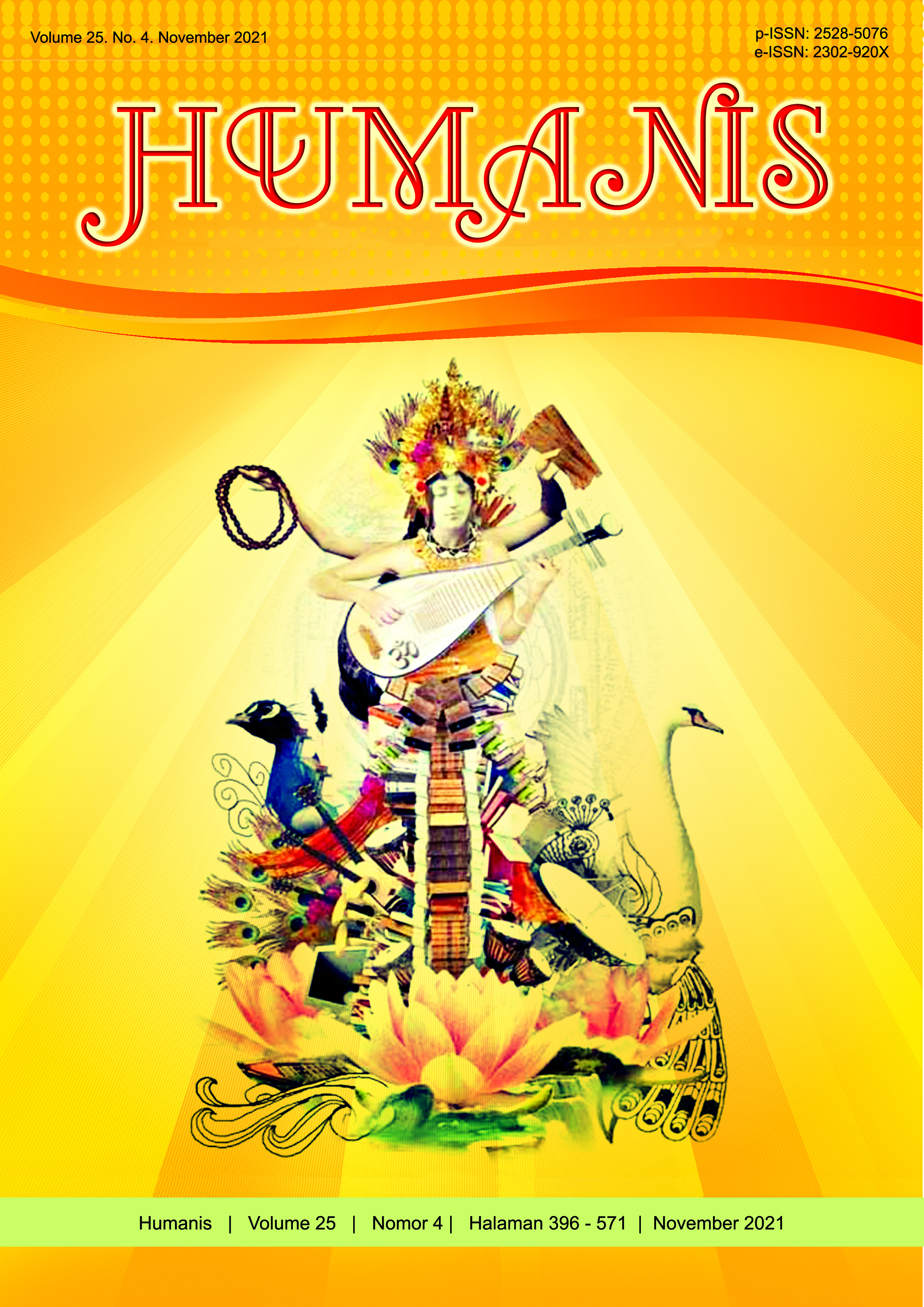Community Roles tokoh Perempuan pada Era Perang Dunia II dalam Anime Kono Sekai no Katasumi ni karya Sunao Katabuchi
Abstract
This study aims to know how Community Roles that are played by the women during World War II, in the anime entitled Kono Sekai no Katasumi ni by Sunao Katabuchi. The analysis was done by using the Gender Analysis Frameworks by Caroline Moser (1993). The data were collected by watching the anime and applied the note taking technique. The qualitative analysis of the data shows that women character in the anime was very active in their community. They join the organization namely Dai Nippon Fujinkai and all the activities in their neigbourhood. Those activities show their community roles.
Downloads
References
Ariefa, Nina Alia. (2020). Peran Perempuan Jepang dalam Perspektif Gender. (penelitian). Universitas Al Azhar Indonesia, Jakarta.
Alliyu, Nurudeen. (2016). “Patriarchys, women’s triple roles and development in Southwest Nigeria”. International Journal of Art and Humanities Bahir Dar- Ethiopia 5(4), 94-110. http://dx.doi.org/10.4314/ijah.v5i4.7
Arntzen, Birgitte. (2015). Attention to Gender and Climate Change: Transformation of Gender Roles and Adaptive Capacity of Rural Women in Two Villages in Meatu District Tanzania. (Master Thesis). Norwegian University of Life Sciences, Ås.
Baba, Junko. (2017). “Discourse on food in World War II Japan”. Japanese Studies Review. Vol XXI. 131-153.https://asian.fiu.edu/projects-and-grants/japanstudies-review/journal-archive/volume-xxi-2017/baba-junkorevision-710-corrections-added.pdf
Balgah, Roland Azibo et al. (2019). “A Gender Analysis of Intra-Household Division of Labor in Cameroon using moser’s triple roles framework. Asian Journal of Agricultural Extension, Economics&Sociology. Vol 29(4). 1-12. 10.9734/AJAEES/2019/v29i430095
Damanik, Frida. (2018). Tradisi Pemakaian Zōri dalam Kehidupan Masyarakat Jepang. (Skripsi). Universitas Sumatera Utara, Medan.
Dewi, Putu Ayu Sintya, Mahagangga, I Gusti Agung Oka. (2016). “Triple roles perempuan pengelola art shop di pantai Sindhu kelurahan Sanur Denpasar Selatan”. E-Jurnal Destinasi Pariwisata Fakultas Pariwisata Unud, 4(2), 14-19. https://doi.org/10.24843/JDEPAR.2016.v04.i02.p03.
Fajarwati, Alia et al. (2016). “The Productive and Reproductive Activities of Women as Form of Adaptation and Post-disaster Livelihood Strategies in Huntap Kuwang and Huntap Plosokerep”, Procedia Social and Behavioral Sciences, 227, 370-377. https://doi.org/10.1016/j.sbspro.2016.06.084.
Garon, S. (1993) “Women’s group and the Japanese state: contending approaches to political integration, 1890-1945”. Journal of Japanese Studies. Vol 19(1). 5-13. https://doi.org/10.2307/132863
Havens, T.R. (1975). “Women and war in Japan, 1937-1945”. The American Historical Review, 80(4), 913-934. https://doi.org/10.2307/1867444
Husselman, Charlemaine W. (2016). A Gender Analysis of The Triple Burden of Production, Reproduction and Community Service in the Rehoboth Constituency. (Thesis). The University of Namibia, Africa.
Lubis, Imelda. (2019). Analisis Multiple Roles Perempuan dan Kekerasan dalam Rumah Tangga Perempuan Buruh Pabrik di kecamatan Sunggal, kabupaten Deli Serdang. (Skripsi). Universitas Sumatera Utara, Medan.
Mac Laren et al. (2020). “Covid 19 and women’s triple burden: Vignettes from Sri Lanka, Malaysia, Vietnam and Australia”. MDPI Journal of social science, 9(5), 87-98. https://doi.org/10.3390/socsci9050087
Manandhar, P.K. (2008). Managing the Triple Roles: A Study on Rural Mountain Women’s Changing Routine in Nepal. ICIMOD. Diakses pada 6 Juli 2021 dari https://lib.icimod.org/record/13550
March, C., Smyth, I., Mukhopadhyay, M. (1999). A Guide to Gender-Analysis Frameworks. Oxford: Oxfam.
Pekkanen, Robert., Read, Benjamin L., (2009). Local Organizations and Urban Governance in East and Southeast Asia: Straddling State and Society. New York: Routledge.
Utami, Yumadia; Luhur Wedayanti, Ni Putu; Ari Sulatri, Ni Luh Putu. (2020). “Mama Tomo dalam novel happiness karya Natsuo Kirino”. E-Jurnal Humanis Fakultas Sastra dan Budaya Unud, 24(1), 20-28.https://doi.org/10.24843/JH.2020.v24.i01.p03
Wahyuni, Yekti. (2017). “Peran Produksi,Reproduksi, dan Sosial kemasyrakatan perempuan pengolah kerang hijau di Muara Angke, Jakarta Utara. Jurnal Perempuan. Vol 22(4). 345-357. http://dx.doi.org/10.34309/jp.v22i4.207
Wilson, S. (2006). “Family or state?: Nation, war, and gender in Japan, 1937-45”. Critical Asian Studies,38(2).209-238. https://www.tandfonline.com/doi/abs/10.1080/14672710600671194


















